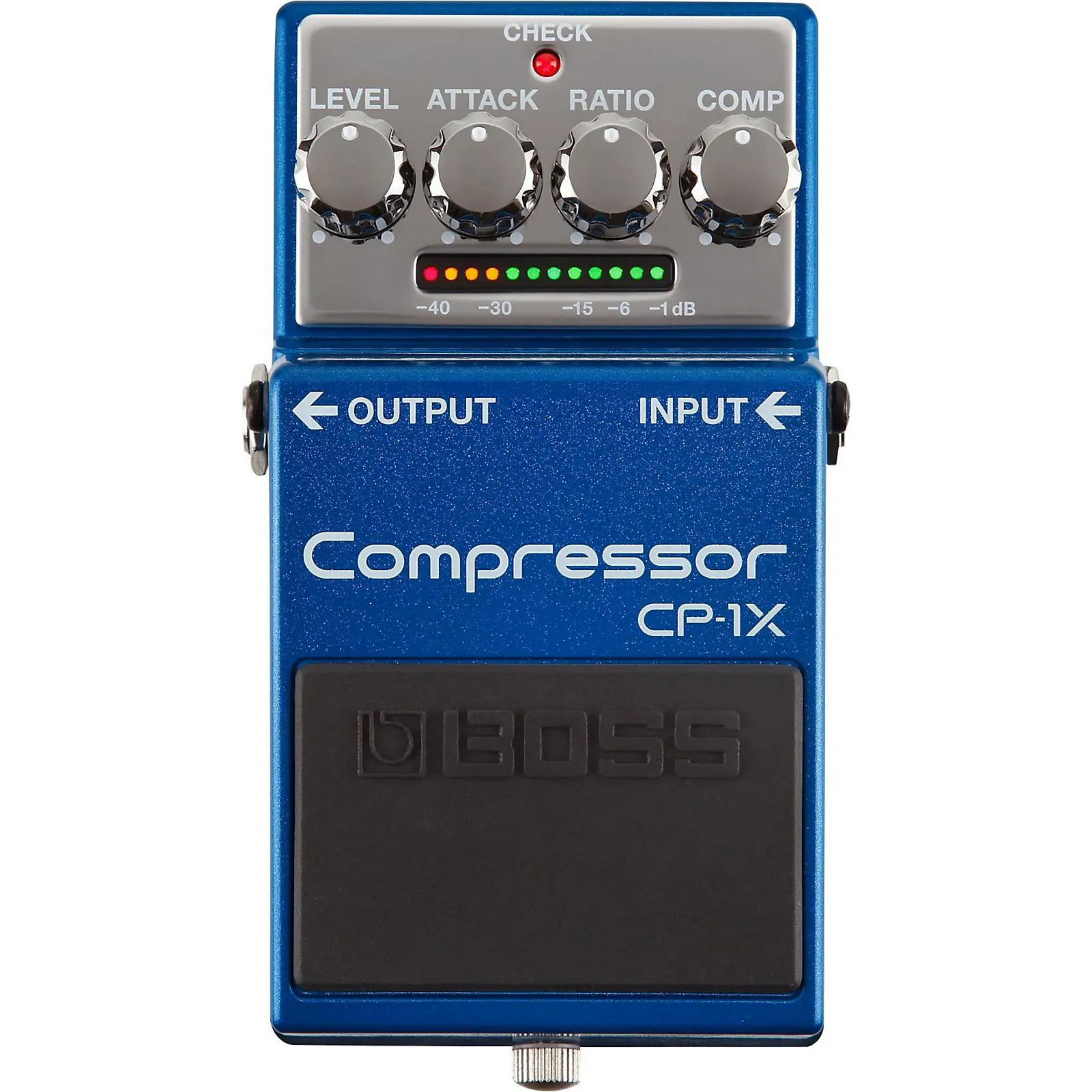The Essential Role of Compression in Acoustic Guitar Playing
In the world of acoustic guitar performances, achieving the perfect balance of dynamics and clarity can be a formidable challenge, especially in live settings. This is where the unsung hero of the pedalboard comes into play: the compression pedal. Often overlooked in favor of more dramatic effects like reverb or delay, compression is vital for both the nuanced player and the dynamic strummer. In this comprehensive guide, we'll explore the transformative role of compression in acoustic guitar playing, revealing how it can elevate your live performances and recordings to professional levels.
Understanding Compression: The Basics
Before diving into the specifics of acoustic guitars, let's demystify what compression actually does. At its core, a compressor pedal reduces the dynamic range of your guitar's signal. This means it narrows the gap between the loudest and quietest parts of your performance. When applied correctly, compression can add sustain, enhance clarity, and ensure that every nuance of your playing is heard, without the peaks and troughs that can make live acoustic guitar sound inconsistent.
Why Compression is Key for Acoustic Guitars
Acoustic guitars, by their nature, produce a wide dynamic range. The difference between gently fingerpicked passages and vigorous strumming can be vast. In a live setting, this dynamic range can be both a blessing and a curse. While it allows for expressive playing, it can also lead to issues where softer notes disappear while louder chords dominate, potentially leading to a less balanced and professional sound.
1. Evening Out Dynamics
The primary role of a compression pedal in acoustic guitar playing is to even out these dynamics. By compressing the signal, the pedal boosts quieter notes and attenuates louder ones, ensuring a more consistent volume. This doesn't mean your playing will become monotonous; instead, it ensures that every note is heard clearly, regardless of your playing intensity.
2. Adding Punch and Presence
Beyond leveling dynamics, compression adds a certain punch and presence to your acoustic guitar sound. This is particularly useful in live settings, where your acoustic guitar needs to cut through the mix of other instruments or ambient noise. A well-compressed guitar signal can stand out more distinctly, ensuring your performance captures the audience's attention.
3. Enhancing Sustain
Another benefit of using compression is the enhancement of sustain. Acoustic guitars naturally have a shorter sustain compared to electric guitars. Compression can extend the life of each note or chord, allowing them to ring out longer and with more body. This is especially valuable for solo acoustic performers or during instrumental sections of a song.
Setting Up Your Compression Pedal for Acoustic Guitar
The key to effectively using a compression pedal with an acoustic guitar is subtlety. The goal is to enhance, not overwhelm, the natural sound of your instrument. Here are some tips for setting up your compression pedal:
- Threshold: Start with a moderate threshold setting. This determines when the compression kicks in. You want it to engage during louder passages without squashing the life out of your softer playing.
- Ratio: A lower ratio (around 2:1 or 3:1) is often sufficient for acoustic guitars. This keeps the compression gentle and natural-sounding.
- Attack and Release: A medium to slow attack time will preserve the initial transients of your strumming or picking, maintaining the natural feel of your playing. The release time should be set so that the compression eases off smoothly, without any abrupt jumps in volume.
- Makeup Gain: After compression, your overall signal might be lower. Use the makeup gain to bring your volume back to the desired level, ensuring your playing cuts through the mix.
Which Compressor Pedals To Start With?
If you want to get started using compression to enhance your acoustic guitar sound, here are a couple pedals worth considering:
LR Baggs Align Series Compression Pedal
Specifically designed for acoustic musicians, this pedal is part of the LR Baggs Align Series, which aims to maintain the purity of the acoustic sound. It offers a simple, user-friendly interface with controls for compression, gain, and volume, making it a great choice for those looking to preserve the natural tone of their acoustic guitar.
Boss CP-1X Compressor Pedal
Known for its advanced technology, the Boss CP-1X provides a new level of performance for guitarists. It uses Boss's Multi-Dimensional Processing (MDP) to intelligently adapt to your playing, providing the right amount of compression without sacrificing the musicality of your acoustic guitar.
Live Performance Tips
When using a compression pedal in live performances, consider the following:
- Sound Check: Always soundcheck with your compression pedal engaged. This ensures you set your levels correctly with the pedal's effect in mind.
- Listen to the Room: The acoustics of the venue can greatly affect how your compressed guitar sounds. Be prepared to tweak your settings to suit the space.
- Monitor Your Playing: With compression, it's easier to maintain a consistent volume. However, be mindful of your playing dynamics to avoid a too-flat performance.
Recording with Compression
While this guide focuses on live settings, it's worth noting that compression is equally important in recording. When recording acoustic guitar, compression can help ensure that your takes are consistent and mix-ready. Just like in live settings, aim for subtle compression to maintain the natural characteristics of your acoustic guitar.
Conclusion
In the vast landscape of guitar effects, compression stands out as a foundational tool for acoustic guitarists, particularly in live settings. Its ability to even out dynamics, add punch, and enhance sustain makes it indispensable for both the performing artist and the studio musician. By understanding and implementing the principles of compression, you can ensure that your acoustic guitar performances are always dynamic, clear, and professional. Remember, the best compression settings are those that enhance your



